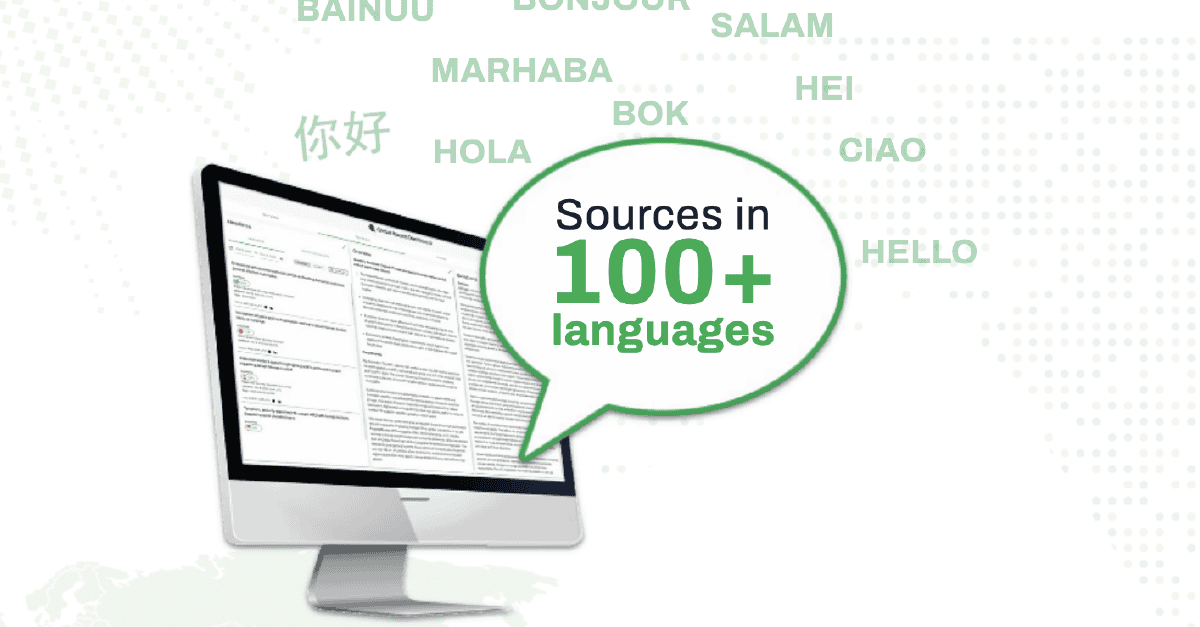When it comes to running an organization, there are countless moving parts to oversee and third-party risks are one of them. In today’s connected world, nearly every organization relies on partnerships with various vendors to support key functions – from marketing firms to manufacturing and engineering firms, to technology providers, distributors, and more. While establishing these types of relationships is critical for a business to exist and thrive, each relationship comes with its challenges, requiring adept third party risk assessment to ensure effective management of the additional risk and threats encountered.
According to a recent article in SC Magazine, “Entering a relationship with a third party can help companies conduct business much more efficiently, but it also puts the organizations involved at higher risk of a security breach. Recent years have seen a troubling correlation emerge: the more third parties a company depends on to carry out business, the higher the frequency of security breaches and data leaks that occur.”
Understanding and managing the risks, including intelligence, reputational risk, and security risk, associated with supplier and third-party networks is a critical function in any business. In many organizations, this can be a defensive, reactive position – however, following these simple tips can help transform that into a more proactive process that gives your leadership team the intelligence and tools they need to get out ahead of disruptions: assessing the downstream impact of an event, spinning up response plans and alternate suppliers, and providing your organization with a competitive advantage.
Boost Partner Stability & Security: Expert Third Party Risk Assessment
Here are three key actions organizations can take to maintain valuable third-party relationships while mitigating issues:
-
Get very familiar with your third-party partners.
Each of your third-party partners, and their associated risk exposure, highlights the necessity of thorough third party risk assessment. They also come with their network of suppliers, vendors, and service providers. To ensure your risk management function is efficient with limited resources, a good first step is to understand which third-party partners are most critical for your organization’s key functions. From there, you can determine which of those partners may present a risk that needs to be mitigated by asking the following questions:
- Threats: What are the threats and risks they’re exposed to? What is the nature of their operational environment? How has this evolved in recent years??
- Scenario Planning: If they are targeted by some type of threat, what will the implications be to our business? Are there pre-existing relationships with alternate providers, or could these functions be temporarily brought in-house? How long would it take to spin up these alternate solutions, and is that timeline compatible with the needs of the business?
- Mitigations: During partner selection and ongoing investment and expectations, it’s important to ask, can they manage their own risks? Are they sufficiently transparent about their own exposure, their mitigation plans, and their own sources of threat intelligence?
-
Make threat intelligence a priority.
Understanding the players inside and outside of your business enables leaders to build a more resilient security posture. Establishing a threat intelligence program, that focuses on strategic intelligence, enables an organization to direct its resources efficiently, developing targeted mitigating actions based on a deep understanding of not only the probability of a disruption or attack, but of the threat actor’s motives, area of focus, likely behaviors, and the geopolitical landscape they’re operating within.
Many organizations make the mistake of assuming they only need intelligence on threats that could impact their own assets, leaving them exposed to threats facing their third-party partners – even though a disruption to a critical partner may have a comparable impact as a disruption to their own facility.
Armed with an understanding of where those critical third-party partners are and what their own capabilities and risks may encompass through a comprehensive third party risk assessment – whether from manufacturing facilities in Ukraine to politically vocal CEOs – you can build out a targeted threat intelligence program which provides early warning of potential disruptions and equips you with the information needed to prepare both tactical and strategic response plans in advance. Organizations that overlook prioritizing threat intelligence – or cast too narrow a net – will often find themselves caught off-guard by a disruption, scrambling for intelligence and resources right alongside competitors and peers.
-
Leverage the right tools.
Even with a well-scoped threat intelligence program, the overwhelming, constantly changing amount of data circulating necessitates the use of technology platforms to aggregate, sort, and distill all that intelligence into something that can drive decisions and actions. It is not enough to crawl through the deep trenches of the dark web. Instead risk and threat intelligence teams must also monitor all sources available, ranging from social networks to local and global news media to forums, blogs, and more. Simply tracking keywords will not alert you to shifts in the narrative or in sudden changes to relevant trendlines: sentiment, emotion, volume, and stability. Using this more nuanced level of augmented analysis gives you the advance warning you need to understand potential impacts to you and your partners before the disruption hits.
If Your Third-Party is Compromised, You’re at Risk Too
When it comes to your partners, you don’t necessarily want to do the bulk of the legwork in terms of developing their security strategy, but you can’t just sit back and hope for the best. After all, if you’re exposed via a third-party, you need to ensure you are on top of the issue as quickly as possible, have the crisis management side in step, and deploy proportionate resources against this. Then, if you find something, get ahead of it on behalf of the partners, as you may be even more exposed than they are.
Leveraging technologies, specifically AI, can really be beneficial to managing third-party risks, as the technology and tools can do the majority of the manual data sourcing, aggregation, and pattern recognition, which allows the intelligence professional to strategize, plan, and act.
Among the areas you might consider monitoring include public perception and sentiment. Questions to ask yourself include: Is there a negative trend around the sentiment and emotion of you and your third-parties’ brands? Are there fundamental changes in public perception and acceptance around the vertical or markets you operate within? Shifts in the environment often signify shifts in the nature, frequency and/or severity of threats. The capabilities of monitoring tools (and the data they’re ingesting) are exponentially growing and the ability to get in front of a lot of different security issues for you and/or your partners is very possible.
Maintaining a robust security posture, including an emphasis on third party risk assessment, is not an easy task, but it is imperative that leaders make it a priority for their organizations and the organizations they partner with. Every third-party partner is an extension of your business, and a comprehensive third party risk assessment should be conducted as rigorously as your internal evaluations. If not, now is the time to become an active participant in the security posture of your partners. There are simply too many threats and risks surfacing on an almost constant basis; the only option is to stay informed and leverage all of the data that is constantly circulating as your way to stay ahead of any approaching crises.
About Seerist
Seerist’s augmented analytics solution combines AI, machine learning, and expert human analysis to deliver trustworthy threat intelligence. By automating the collection of global data, capturing various shifts and swings, and filtering out the noise, Seerist provides valuable insights. These insights are seamlessly integrated into a user-friendly dashboard, ensuring swift and dependable decision-making in crucial moments.
Book a demo to see Seerist’s threat intelligence tools in action or follow us on LinkedIn to learn more about how Seerist helps you stay ahead of the curve.





